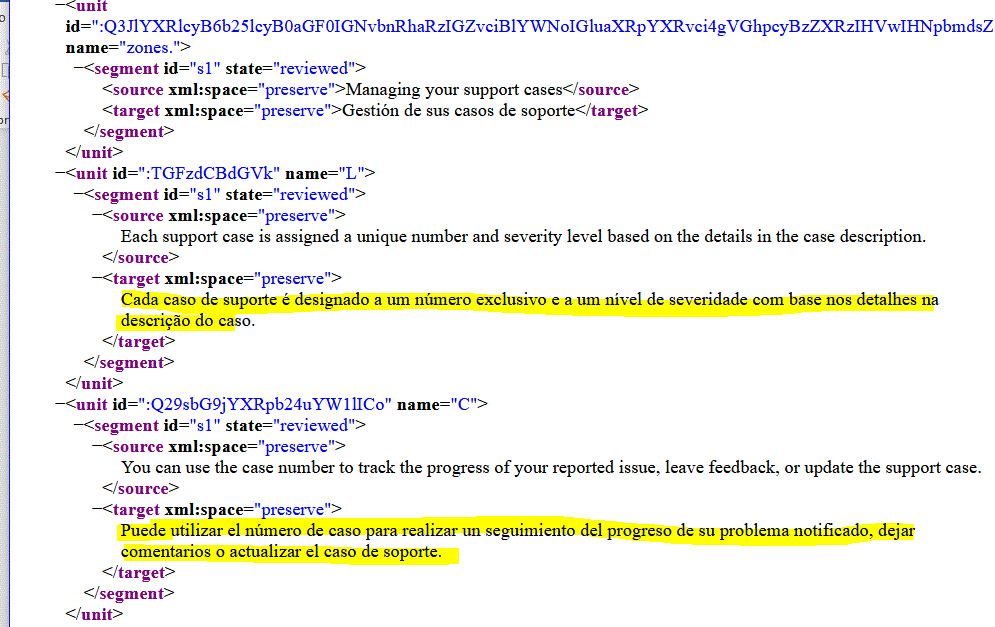The purpose of this application is to identify the most probable language of a <target>target sentence</target> in an xliff, and then create an excel output file with the confidence of each sentence. The confidence value is issued by the IBM Watson Translator offered on IBM Cloud.
Usuallly, all target sentences in the xliff should be of the same target language, but due some errors, file could be ended with a mix of languages. This program, will identify these setences.
Here an example of the xliff with mix of PT and ES in target sentences.
Usually, due the large number of words, does not look a good option to manually inspect the full file, so DL/AI is good option here to use a "language identification". Several services offer language identification, as the Google’s Cloud Translation (https://cloud.google.com/translate). But in is proposed solution we will use the IBM Watson Language Translator that is offered in IBM Cloud (https://cloud.ibm.com/apidocs/language-translator).
Using python, the main steps will be:
- Source and target content extraction: Source XLIF will parsed using a SAX parser implement in python. This parser is event based, that allow us to capture the start and end of tags like
<source>and<target>. Using these handlers we will get the source/target content. XML.SAX is supported by default in python. - Target analysis: Send the
<target>content (the sentences we want to find the most probable language), to the IBM Watson Language Translator. The service will return a json file with languages ordered by confidence.
"languages" : [ {
"language" : "es",
"confidence" : 0.9955377581001156
}, {
"language" : "it",
"confidence" : 0.002488014556859667
}, {
"language" : "eo",
"confidence" : 5.747564458215991E-4
.
.
- Last step is to extract the response information, and create an excel file with ES or PT depending of the confidence value, the confidence values for ES and PT, source and target.
Final result is an excel very similar as this one (in this screen capture, only format has been changed). Notice how the Excel can easily allow as to find what are the trouble segments. This allows solve in large the issue. Notice in the screen capture, the most probable ES or PT pair and the confidence.
Requirements:
-In order to run this, you need an IBM Cloud account (free) and IBM Watson Language Translator (Lite version free) in IBM Cloud. Credentials are stored in the code.
(C) 2022 miguel canals (http://www.mknals.com) MIT License


